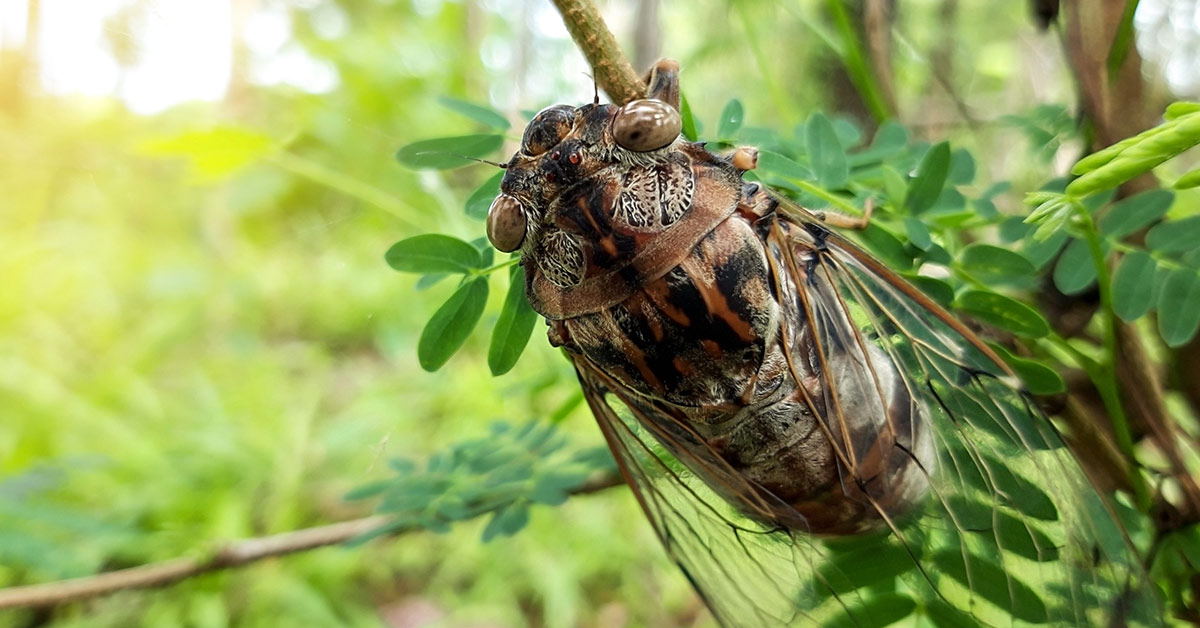Though there are some insect aficionados out there, most of us prefer to keep our distance from anything that qualifies as a bug. Unfortunately, this year in the United States, that might be easier said than done. A massive brood of cicadas in 2021 is set to emerge across a huge portion of the country. (1)
A Massive Brood of Cicadas in 2021 Are Going To Emerge in the United States
A giant brood of 17-year cicadas in 2021, starting in either April or May, is set to emerge from under the ground in at least 12 states. Known as Brood X, they will appear anywhere from New York west to Illinois and as far south as northern Georgia. (1)
For approximately one month, both rural wooded areas and suburban areas will be filled with the buzzing, ringing sound of cicadas’ mating call. Each female will lay about 100 eggs into tiny tree branches. (1)
From there, all of the adult cicadas will die, and the babies (called nymphs) will fall from the trees and burrow into the ground, where they will stay for another 13 to 17 years. (1)
More About 17-Year Cicadas
The 13 and 17-year cicadas in the Eastern United States are a unique species out of the thousands that exist worldwide. This is due to the length of time (13 to 17 years) that they spend “growing up” underground before emerging all at the same time to mate and continue the cycle. (1)
Not much is known about what they are doing underground for all of those years. It’s unclear what they eat or why their life cycles are so long. We do know that this species of insects are old – so old, in fact, that they are older than the forests that they live in. We know currently that these loud bugs are at least 4 million years old and have since split into three separate lineages. (1)
Scientists believe that during their time underground, they feast on plants’ roots and pass through five juvenile or growth phases. Like clockwork, they emerge every 13 or 17 years, depending on what type they are. (1)
They emerge all at once because it increases their likelihood of finding a mate and reproducing successfully. Mating is the only reason that they emerge at all. Emerging all at once also prevents their population from being massively decreased by predators because animals like bats, birds, and foxes can’t physically eat the number of cicadas that emerge. (1)
Some Appear Earlier
There are some cicadas that, for whatever reason, develop faster and therefore emerge sooner, as well as those who develop slower and will emerge late. The scientists believe this has to do with how much food they had access to while underground. (1)
Weather patterns can also affect cicadas, but usually sudden warm or cold periods that “trick” them into coming out at the wrong time trick enough of them that it doesn’t affect their ability to reproduce all that much. This group will now shift to a new schedule. (1)
Cicadas in 2021: More Broods Than Ever Before
Climate change has caused many broods to develop that are all on their own schedules. In northeastern deciduous forests, there are 12 broods of 17-year cicadas. The cicadas are quite sensitive to climate changes and therefore adapt their cycles quite quickly. (1)
Deforestation also affects these insects, as they cannot reproduce without trees. Many broods have already gone extinct, and others are changing their cycles because of global warming. (1)
You Can Help
With so many thousands of cicadas emerging in different intervals, it is hard for the researchers to track and follow them all. You can help the scientists document the emergence of different broods by downloading the Cicada Safari app on your phone. Submit photos in the app when you see cicadas to help them map where and when the broods are emerging. You can also follow on with their research in real-time.
Keep Reading: Ancient tree tells chaotic tale of Earth’s magnetic field reversal
Sources
- “Giant Brood of Billions of Insects Set to Emerge in US in Mass Synchronized Event.” Science Alert. John Cooley, Chris Simon. March 15, 2021.
- “Cicada Safari.” Scistarter.

